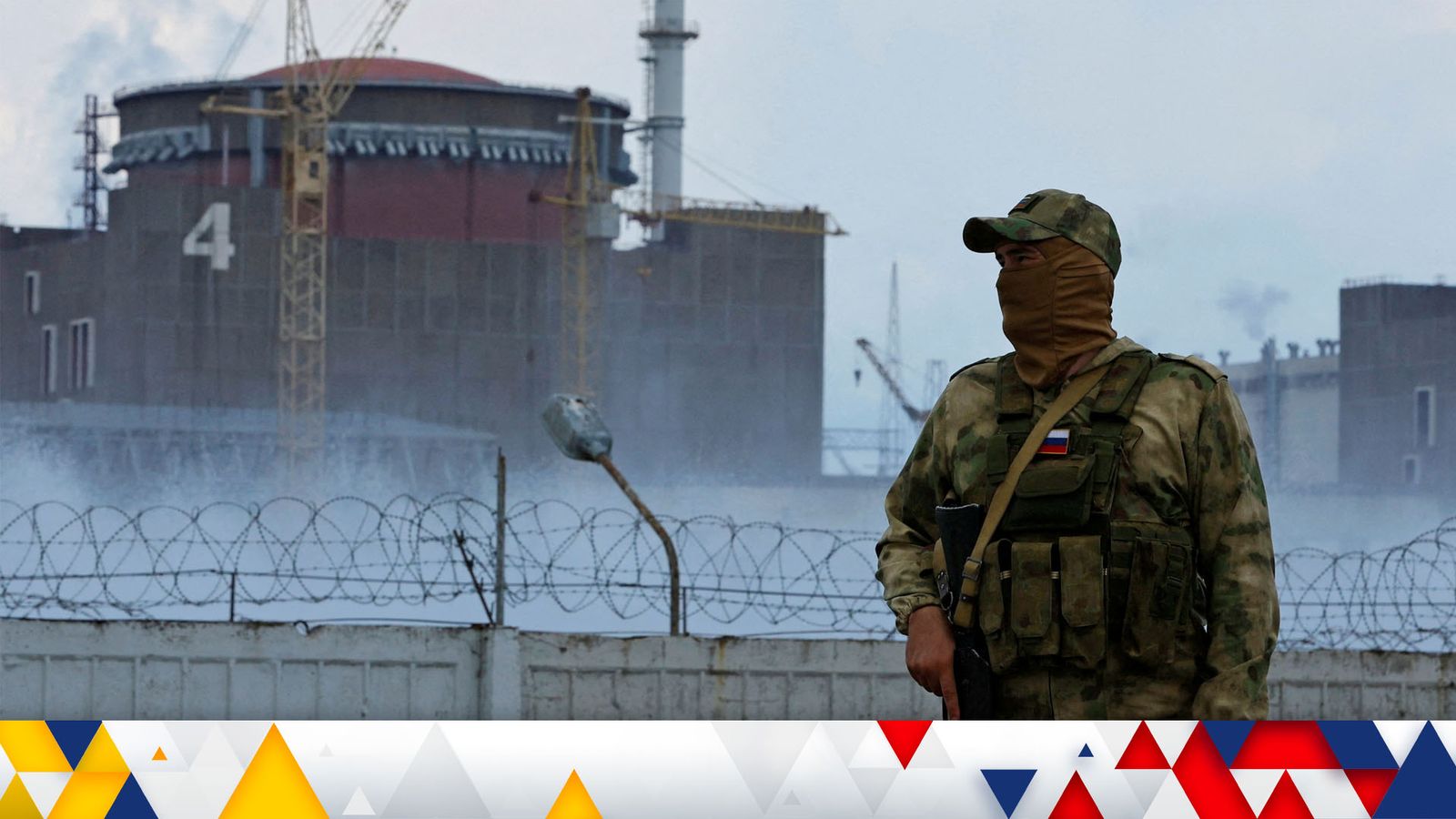The Zaporizhzhia nuclear power plant is strategically critical to both sides of the Ukraine-Russia conflict. But in terms of nuclear safety, the ongoing stalemate is perilous.
It’s the closest major electricity generator to the parts of Ukraine annexed by Russia, and Moscow wants the plant’s power to control its territory there. It has also expressed a desire to re-route Zaporizhzhia’s power to Russian cities as well.
On the other side, Ukraine can’t afford to lose the asset – the largest nuclear plant in Europe which once supplied 20% of its electricity – at a time when Russia has a stranglehold on its civilian infrastructure.
Ukraine updates – Putin ‘moves Iranian drones into Belarus’
The site is currently being operated by its original Ukrainian staff, but is under Russian military control.
The situation is tense. The plant’s Ukrainian state-owned operator Energoatom says Russia has just kidnapped Zaporizhzhia’s deputy head – which they say happened in advance of Russian engineers taking over. This comes weeks after the plant’s director was kidnapped and released.
Shelling of the plant has been a constant threat.
Zelenskyy vows to make battlefield ‘more painful’ for Russian forces after another day of deadly rocket strikes on Ukraine
Ukraine war: Russian forces will soon be down to last supplies of fuel after Kerch Bridge attack, analysts say
Ukraine war: What do satellite images of the Kerch Bridge explosion tell us about the cause of the blast?
Landmines detonating around the plant’s perimeter have also been implicated in starting fires that have threatened the reactors and the crucial power connections that link the plant to Ukraine’s national gird.
So what are the risks?
The Zaporizhzhia plant is made up of six pressurised water reactors. The sheer scale of the facility means there are hundreds of tonnes of nuclear fuel in the reactors themselves, and more than 2,000 tonnes of spent fuel in storage ponds and a dry storage facility on the site.
They’re of a relatively modern design, with safety features that make them much safer in an emergency than those involved in other civilian nuclear disasters like Chernobyl and Fukushima.
They’re also much safer now than they were at the start of the Ukraine invasion. Under the supervision of the International Atomic Energy Agency (IAEA), which now has two observers stationed at the plant, all six reactors are in “cold shut down”, their fuel slowly cooling inside the reactor buildings.
Read more:
‘Seven pillars’ used to assess safety of Zaporizhzhia nuclear power plant
Russian forces tortured staff at nuclear plant, Ukraine’s power industry head claims
The main ongoing risk is a loss of power to the site. Even while shut down, cooling water has to be circulated around the reactor fuel to prevent it melting down. The storage ponds also need topping up to prevent spent fuel overheating and potentially releasing radioactivity.
Please use Chrome browser for a more accessible video player
Shelling impact
Just days ago, shelling disconnected one of the last remaining cables bringing power to the site. Not for the first time, the complex had to switch to backup diesel generators. All are currently functioning, but the plant only has 10 days of diesel stored on site.
The other risk, of course, is impact from shelling or missiles. Since the site was occupied by Russia in March, shells have pierced buildings immediately adjacent to the reactors themselves.
The reactors are a very thick still vessel, surrounded by a heavy concrete shell, so the direct risk to them is considered quite low. However, fire, or damage to safety systems like backup power, could cause fuel to overheat and melt down.
If projectiles were to hit the fuel stored in reactor buildings or in the ponds outside, this could cause highly radioactive waste to be spread over the site. However, the fuel is not flammable, so the risk to the wider environment is likely to be small.
What’s the worst-case scenario?
A worst-case scenario would be a total loss of power, combined with damage to reactor buildings or safety systems. Highly implausible in peacetime, but entirely possible in the current conflict.
In that case, most international experts believe things could get as bad as they did at Fukushima in Japan in 2011. In that disaster, a loss of power led to nuclear fuel overheating, the hydrogen gas this produced then exploded, releasing radioactive contamination high into the atmosphere.
That event released radioactivity over a wide area, meaning the costly evacuation of people from there, and many years of environmental clean-up.
Unlike Japan, staff at Zaporizhzhia have had time to prepare for the worst. But the only sure way to prevent that is an end to fighting around the plant.
The head of the International Atomic Energy Agency Rafael Grossi is now in Moscow to negotiate a safety zone for Zaporizhzhia – but with neither side currently willing to relinquish control, the area remains an accident waiting to happen.






















